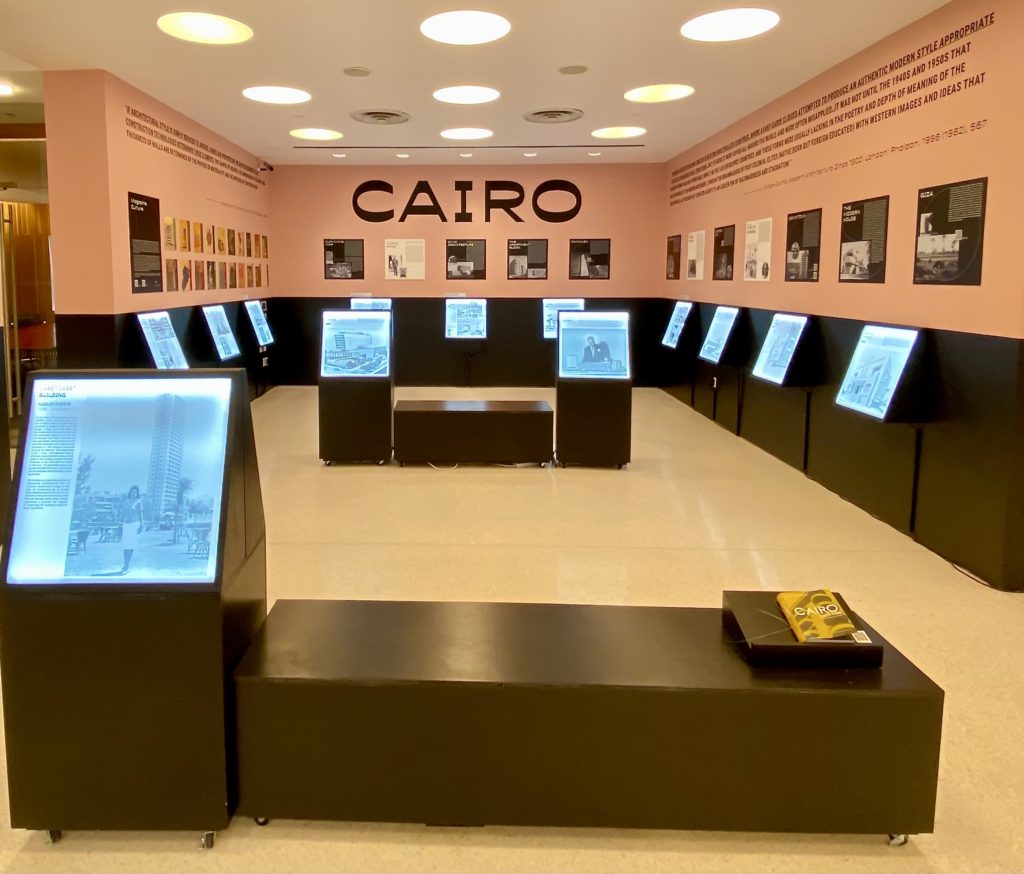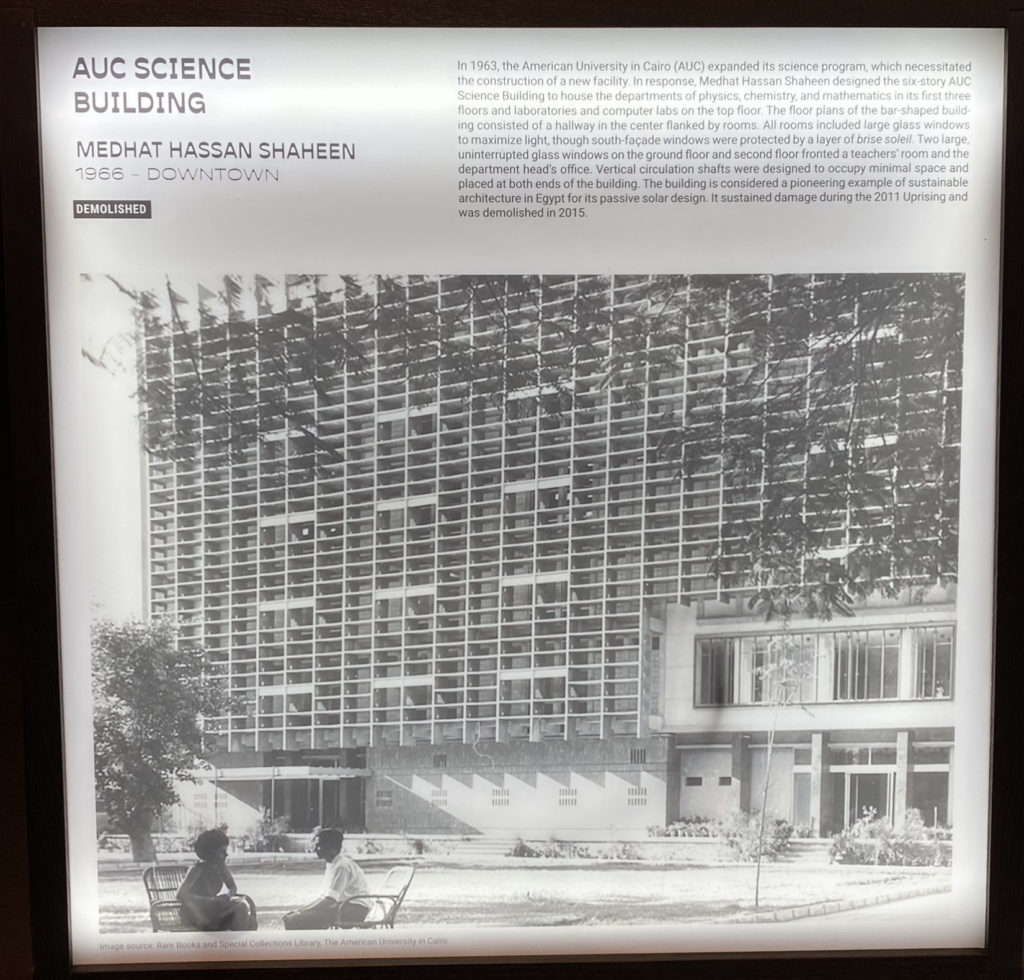By Marianne Dhenin and Mohamed Gamal-Eldin
(All image credits belong to Gamal-Eldin)

On a tree-lined side street just around the corner from Washington Square Park – and close enough to Zooba, the hip Cairo- and now New York-based Egyptian street food restaurant, to warrant traipsing over for lunch– scenes from everyday life in Cairo are on display at New York City’s Center for Architecture.
A backlit black-and-white image at the center of the room shows a woman in a striped shirt and knee-length skirt, flanked by palm trees and bamboo lawn furniture, the sort that’s still ubiquitous at sporting clubs and cafés across Egypt, posing for the camera on the Nile’s Mounira Island. A thirty-one-story high-rise towers in the background. Another image shows a pair of students seated in those same bamboo chairs on the lawn outside the American University in Cairo’s six-story Science Building, its large glass windows protected by an elaborate brise soleil.

While the scenes feel timeless, the focus of the exhibition is not the characters at all. Instead, the focus is on the built environment they inhabit. The images have been brought together, in part, to challenge the anthropocentrism of history and underscore the impermanence of modernist buildings in this city on the Nile. The Sabet Sabet Building, built in 1958, which rises in the background of the image from Mounira, still stands in Garden City. But the Science Building on AUC’s downtown campus, designed by architect Medhat Hassan Shaheen and built in 1966, has been abandoned and demolished, victim to what academics call Cairo’s urbicide.
Continue reading “Whose Modernism? An Exhibition Review of Mohamed ElShahed’s Cairo Modern”